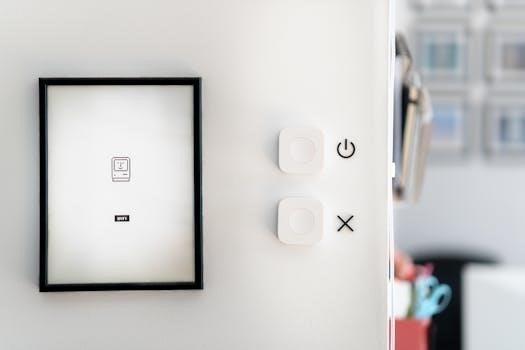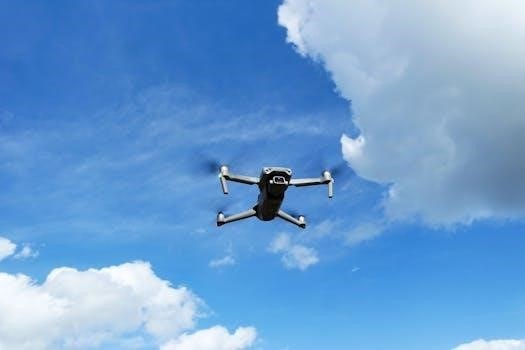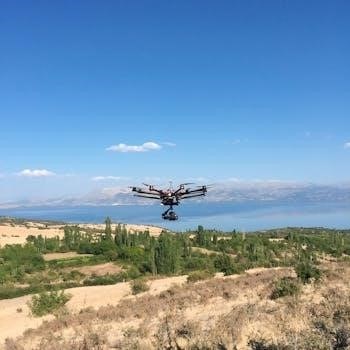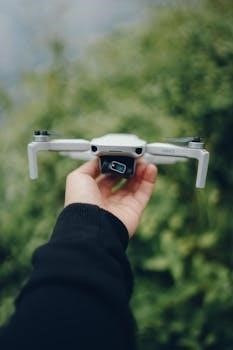Aire Control Remote Instructions⁚ A Comprehensive Guide
This comprehensive guide provides step-by-step instructions for operating and troubleshooting your Aire Control remote system, specifically focusing on Minka Aire models. Whether you’re setting up the remote or resolving common issues, this guide will equip you with the knowledge. Learn to maximize your fan experience.
Understanding Aire Control Systems
Aire Control systems, often associated with Minka Aire ceiling fans, represent a sophisticated method of managing your home’s comfort. These systems utilize radio frequency (RF) technology to communicate between a handheld remote and a receiver unit installed within the fan’s canopy. This wireless communication allows for convenient control of fan speed, light intensity, and in some models, even fan direction, from anywhere in the room. The system’s design incorporates multiple frequency code combinations, up to 1024 in some models like the RC1000, to minimize interference from other electronic devices or neighboring Aire Control systems.
Understanding the core components and functionality of Aire Control systems is crucial for effective operation and troubleshooting. The remote acts as the transmitter, sending commands to the receiver. The receiver, in turn, interprets these commands and adjusts the fan and light settings accordingly. Many systems also offer a learning frequency function, enabling you to synchronize the remote and receiver, ensuring seamless communication. Familiarizing yourself with these basics will empower you to optimize your ceiling fan experience.

Minka Aire Remote Control Models and Compatibility
Minka Aire offers a diverse range of remote control models, each designed to work with specific ceiling fan series. Understanding the compatibility between your remote and fan is essential for seamless operation. Some remotes, like the RC223 and RC1000, are universal handheld systems designed for broader compatibility across Minka Aire fans. However, certain models are exclusively designed for specific fan types, such as those with DC motors or particular lighting configurations, like the F617L, F745, F905, F905L, F899L, F868L and F1001.
Identifying your remote control model is the first step. This information is typically found on the remote itself, either on the front, back, or inside the battery compartment. Once you know the model number, consult your fan’s user manual or the Minka Aire website to confirm compatibility. Using an incompatible remote can lead to malfunctions or prevent the fan from operating correctly. The Aire Control system is also equipped with a learning frequency function, which has 256 code combinations to prevent potential interference.
Initial Setup and Pairing
The initial setup of your Minka Aire remote involves installing the battery and, in some cases, pairing the remote with the receiver unit in the fan. Start by inserting a compatible battery into the remote, typically an A23 12-volt battery. Ensure the battery is correctly oriented according to the polarity markings inside the battery compartment. Once the battery is installed, restore power to the ceiling fan.
Pairing is often necessary to establish communication between the remote and the fan. Many Minka Aire remotes use dip switches for frequency setting. Open the battery compartment of the remote and locate the dip switches. The receiver unit in the fan will also have dip switches, typically located under the fan’s canopy. Set the dip switches on both the remote and the receiver to the same combination. Any combination of settings will operate the fan as long as the switches in the remote control and receiver are set to the same position. If your remote doesn’t have dip switches, it might use a learning frequency function. In that case, you may need to press and hold the “stop” button on the remote for 10 seconds to initiate pairing.

Operating Fan Speed and Direction
Once your Minka Aire remote is set up and paired, you can control the fan speed and direction. Most remotes feature dedicated buttons for increasing and decreasing the fan speed. These buttons often have symbols indicating the speed levels, such as a fan icon with varying numbers of blades or “+/-” signs. Press the appropriate button to cycle through the available speeds, typically ranging from low to high.
To change the fan direction, look for a “REV” or “Reverse” button on the remote. In the summer, the fan should rotate counter-clockwise to create a downdraft, providing a cooling effect. In the winter, the fan should rotate clockwise to pull warm air from the ceiling, distributing it throughout the room. Some Minka Aire fans have a reverse button (REV) on the remote; others may require you to flip a switch on the fan motor housing. Press the “REV” button or flip the switch to change the fan direction according to the season. Ensure the fan is turned off before changing direction to prevent damage.

Light Control Functions (Dimming and On/Off)
Minka Aire remotes offer convenient light control functions, allowing you to adjust the brightness and turn the lights on or off. Most remotes have a dedicated button for controlling the light, often marked with a light bulb icon. A single press of this button typically toggles the light on or off.
Many Minka Aire remotes also provide dimming capabilities. To dim the lights, press and hold the light button. The light will cycle through different brightness levels, gradually increasing or decreasing in intensity. Release the button when you reach your desired brightness level. Some remotes may have separate buttons for increasing and decreasing the light intensity. The light will cycle between bright and dim settings as long as the button is held. Check the manual for the exact functionality of the light control buttons, as they may vary slightly depending on the remote model. Ensure the light is compatible with dimming to avoid damage.
Troubleshooting Common Issues (Unresponsiveness, Intermittent Function)

Experiencing issues with your Minka Aire remote? Unresponsiveness or intermittent function can be frustrating, but often resolvable. First, check the batteries. Ensure they are fresh and correctly installed. Weak batteries are a common cause of remote malfunction. Try replacing them with new ones to see if that resolves the problem.
If the batteries aren’t the issue, check the remote’s range. Minka Aire remotes typically have a range of 20-40 feet. Obstructions or interference can reduce this range. Ensure there’s a clear line of sight between the remote and the receiver in the fan. Also, check the dip switches. If using a remote controlled fan; check to see that the deep switches from transmitter and receiver are set to the same frequency code, if they are mismatched, the remote won’t communicate properly. If the remote is still unresponsive, try resetting and reprogramming it according to the instructions in the manual.
Dip Switch Configuration and Frequency Setting
Minka Aire remotes often utilize dip switches to establish a unique frequency, preventing interference between multiple fans or other devices. These switches are typically located in the battery compartment of the remote and on the receiver unit installed in the fan’s canopy. Configuring these switches correctly is crucial for proper operation. The Aire Control System is equipped with a learning frequency function which has 256 or 1024 code combinations to prevent potential interference from other remote units.
To configure the dip switches, first, locate them on both the remote and the receiver. Ensure the power to the fan is turned off before accessing the receiver unit. Using a small tool, such as a screwdriver or pen, carefully adjust the switches. It’s essential that the switch settings on the remote exactly match the settings on the receiver. Any combination of settings will operate the fan as long as the switches in the remote control and receiver are set to the same position. If the switches are mismatched, the remote will not communicate with the fan.
Resetting and Reprogramming the Remote
Occasionally, your Minka Aire remote may require a reset or reprogramming to restore proper functionality. This might be necessary if the remote becomes unresponsive, exhibits intermittent behavior, or after replacing the batteries. Resetting the remote typically involves removing the batteries for a short period, usually 10-15 seconds, to clear its memory. After reinserting the batteries, the remote may automatically reconnect to the receiver if the dip switches are correctly configured;
However, some models might require a reprogramming sequence. One common method involves pressing and holding the “Stop” button on the remote for approximately 10 seconds. Refer to your specific Minka Aire fan’s user manual for precise instructions, as reprogramming procedures can vary. If the remote still doesn’t respond after these steps, double-check the dip switch settings and ensure that the batteries are fresh and properly installed; For Minka Aire ceiling fans with remote control (w/o reverse switch) and if the pins in the remote were moved, then it is important to reset them by following the specific instructions provided in the manual.
Battery Replacement and Maintenance
Proper battery maintenance is crucial for ensuring the consistent performance of your Minka Aire remote. When the remote’s range diminishes or the buttons become less responsive, it’s time to replace the batteries. Most Minka Aire remotes use A23 12-volt batteries, but always check your remote’s battery compartment or user manual to confirm the correct type.
When replacing the batteries, ensure that you insert them with the correct polarity, matching the “+” and “-” symbols inside the compartment. Avoid mixing old and new batteries, as this can reduce the remote’s lifespan and potentially cause damage. If you won’t be using the remote for an extended period, it’s a good practice to remove the batteries to prevent corrosion.
To keep your remote in good condition, clean it periodically with a soft, dry cloth. Avoid using harsh chemicals or abrasive cleaners, as they can damage the remote’s surface and internal components. Store the remote in a cool, dry place away from direct sunlight and extreme temperatures. Regular maintenance will help extend the life of your Minka Aire remote.


